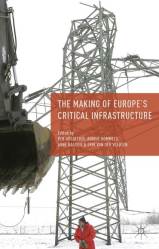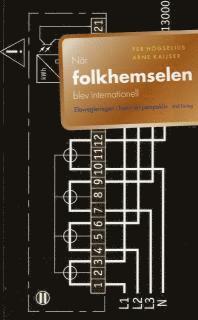Other books

Death on the Beach: Essays from a Marginal World (London and Los Angeles: Barbican Press, 2024). The English version of my beach book originally published in Swedish back in 2020, with a new prologue and an additional final essay. Translated by Agnes Broomé.

The Soviet Nuclear Archipelago: A Historical Geography of Atomic-Powered Communism (Budapest/Vienna/New York: Central European University Press, 2024). Co-authored with Achim Klüppelberg, this book provides a synthetic narrative of the Soviet Union’s nuclear history from the early days of scientific research in the 1920s to Russia’s war on Ukraine.

Döden på stranden (Lund: Ellerströms Förlag, 2020). Linked to our research project Cold War Coasts, this essay collection explores how humans – from the sixteenth century to today – have coped with and experienced the seashore as a landscape of death, fear and sorrow.

Energy and Geopolitics (London and New York: Routledge/Earthscan, 2019). A synthetic work based on the course with the same name that we have been running at KTH since 2009, where it is now also being used as a textbook. History is key to understanding the geopolitics of energy in the twenty-first century.

Europe’s Infrastructure Transition: Economy, War, Nature (Basingstoke and New York: Palgrave Macmillan, 2016). Co-authored with Arne Kaijser and Erik van der Vleuten, the books tells the story of how Europe was transformed through the making – and unmaking – of transnational transport, communications and energy systems, from the mid-19th century to the present.

Die deutsch-deutsche Geschichte des Kernkraftwerkes Greifswald: Atomenergie zwischen Ost und West, 2nd edition (Berlin: Berliner Wissenschafts-Verlag, 2015). The title translates into “The German-German History of the Greifswald Nuclear Power Plant: Atomic Energy between East and West”. The book tells the spectacular story of how Greifswald, a small town in the former GDR, came to host what was supposed to become the world’s largest nuclear power plant – and how it was then stripped of it in connection with Germany’s reunification.

The Making of Europe’s Critical Infrastructure: Common Connections and Shared Vulnerabilities (Palgrave Macmillan, 2013). Co-edited with Anique Hommels, Arne Kaijser and Erik van der Vleuten, this book explores the transnational history of several critical European infrastuctures, from nuclear energy and natural gas systems to air-traffic control and emergency communications. The book is one of the main outcomes of the EUROCRIT project, funded jointly by ESF and six national research councils.
När folkhemselen blev internationell. Elavregleringen i historiskt perspektiv (Stockholm: SNS Förlag, 2007). The Swedish title is difficult to translate , but it reads something like “The Internationalization of Electricity: Deregulation in Historical Perspective”. Co-authored with my colleague Arne Kaijser, the book tells the story of how and why the Swedish electricity market was deregulated, how foreign electricity companies came to take far-reaching control of the Swedish electricity system, and how the Swedish state-owned utility Vattenfall launched a massive and controversial expansion to continental European markets.
Östersjövägar (Stockholm: Atlantis bokförlag). This book is also in Swedish, and the title translates into something like “Baltic Sea Paths”. Written in the form of a travelogue, it hardly qualifies as academic literature, but I’m quite proud of it anyway. The book can be described as a mix of essay, popular history and travel notes. Basically I have here collected impressions and thoughts I’ve had during countless journeys in the Baltic Sea region, but which have not made it into purely academic texts about the history of science, technology and environment of the Baltic Sea countries.

The Dynamics of Innovation in Eastern Europe: Lessons From Estonia (Cheltenham, UK & Northampton, MA, USA: Edward Elgar, 2005). This is my PhD thesis, which focuses on how Estonian researchers, engineers and entrepreneurs, following the collapse of socialism in Eastern Europe, reoriented themselves from the Soviet Union to the Nordic countries at precisely the same time as the IT revolution became hotter than ever. In the years around 2000, Estonia became world-famous for its technological capabilities and innovative strength, and I show this was enabled through the use of competencies built up during the era of Soviet occupation in combination with the building of innovation networks across the Baltic Sea, to Finland and Sweden. Take a look at Google Books.


Trackbacks & Pingbacks